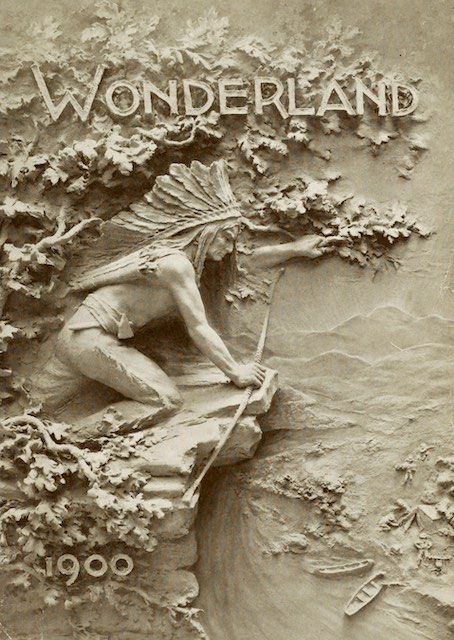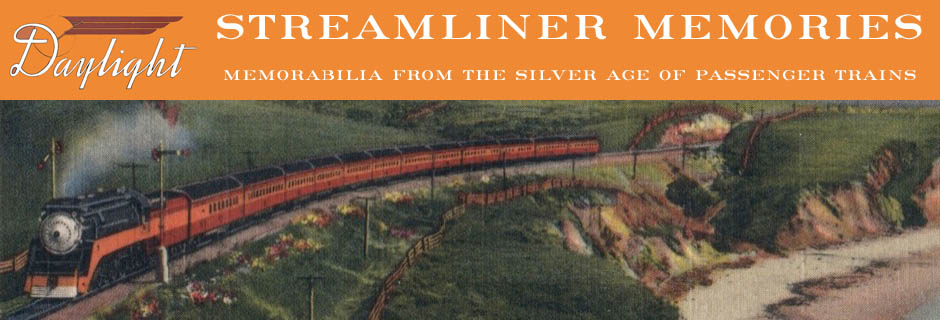The 1900 through 1903 editions of Wonderland featured stunning three-dimensional covers portraying fantastic scenes symbolizing the West. When I first saw them, I thought they were classic examples of trompe l’oeil, meaning two-dimensional artworks that fool the eye into thinking they are really three dimensional. It turns out it was just the opposite: they actually are three-dimensional images, sculpted by an artist named Alfred Lenz and photographed for the covers. I’ll discuss Lenz and his sculptures in more detail when I present Wonderland 1902.
 Click image to download a 43.3-MB PDF of this 136-page booklet.
Click image to download a 43.3-MB PDF of this 136-page booklet.
Inside, the 1900 edition represented the biggest break from previous editions since Wheeler took over. While the booklet is still a collection of articles, similar the 1896-1899 versions, including the obligatory articles about Yellowstone and Alaska, more than half of this issue is on one topic: the trail of the Lewis & Clark Expedition. This meticulously researched article propelled Olin Wheeler from being a mere advertising agent to a well-respected historian.
Apparently, Wheeler’s work for Northern Pacific, which paralleled much of Lewis & Clark’s route, led to his fascination with the expedition that had taken place nearly 100 years before. Relying on the explorer’s journals, he took the time to follow as much of their exact route as he could. The article described that route and indicated the changes that had been made to the landscape since 1806.
This article became the foundation for a two-volume book, The Trail of Lewis & Clark (volume 1 and volume 2), that was published by Putnam in 1904, just in time for the expedition’s centennial. Wikipedia says that Wheeler “was the first historian to produce a significant work about the” expedition. This isn’t quite true, but the book was meticulously researched enough to impress professional historians and clear enough to attract lay readers.
